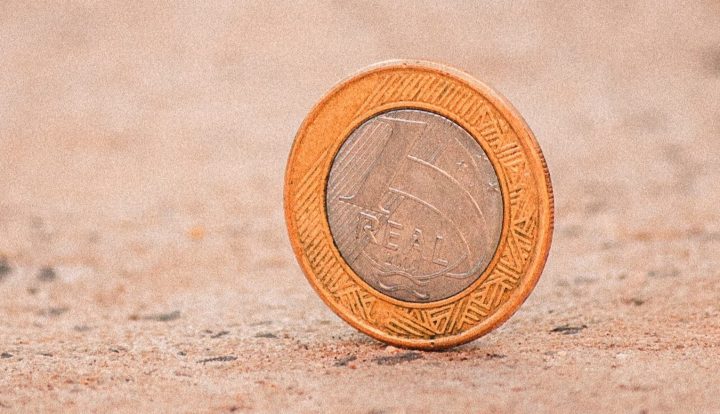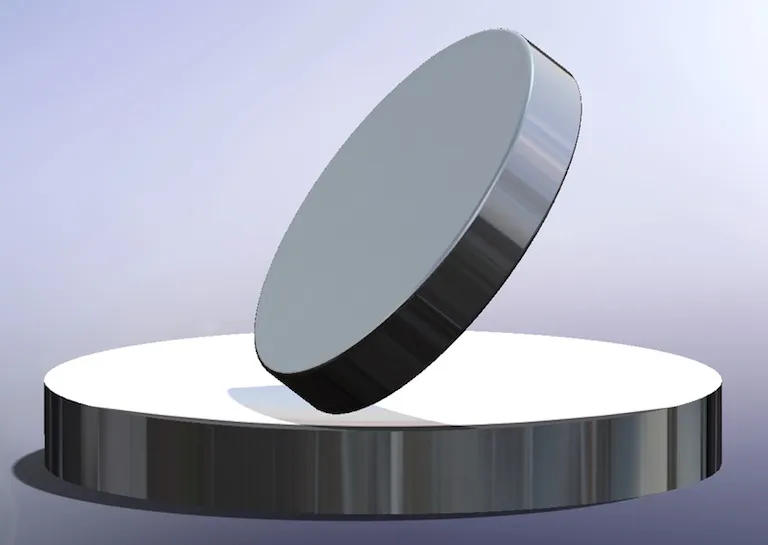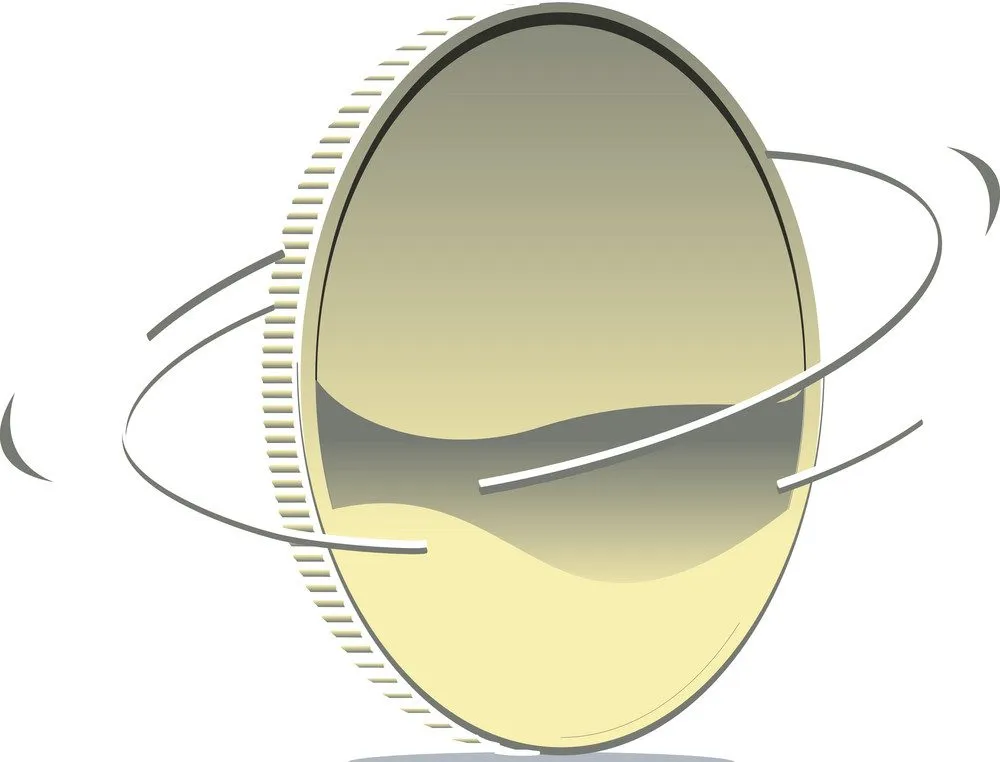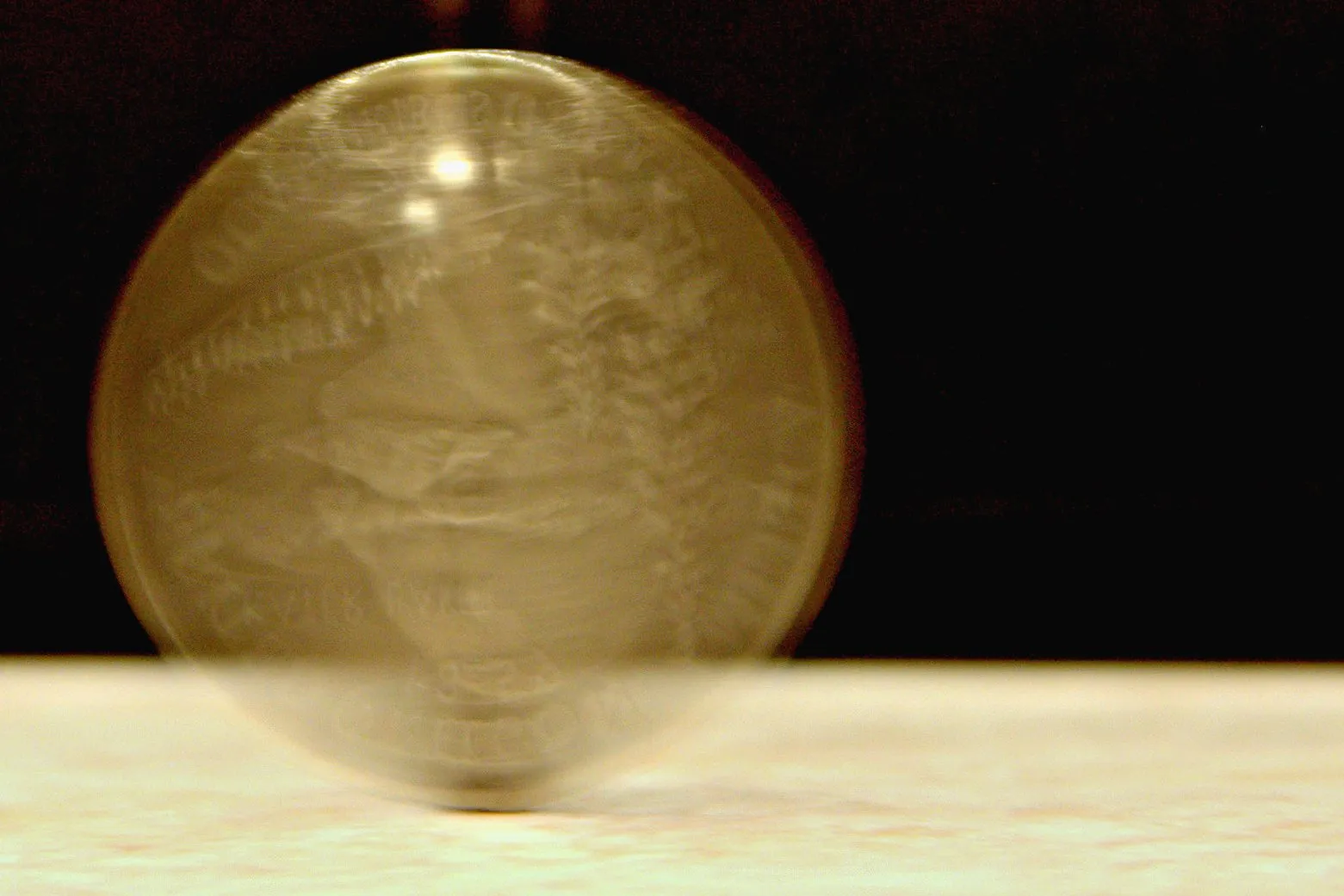STRANGE STUFF
The super-wobbler, rolling speed, friction, drag, whump… The mechanics of a spinning coin

Few things are as simple as they seem when you peer below the surface. Take the spinning of a coin...
Choose a flat surface, place a coin on its end – a R5 is perfect – and give it a flick. For a while, it spins on its axis in one place, but as it slows down it begins to wobble. The sound it makes speeds up, merging into a sort of whir, which ends abruptly in a thrrwump.
We may give it no more thought, but there are scientists who have become fascinated about what’s going on there. Two things it seems: a simultaneous spin and wobble. The first happens while it spins on its edge and the wobble begins as it loses momentum, leans over, and rotates on its edge.
It’s easier to understand from the motion of a top, which you get going by spinning it on its axis. As it slows down, it starts to wobble in widening circles opposite to the direction of the spin. This has a technical term: precession. The earth does it too. What was once dubbed the Pole Star, Polaris, thousands of years ago, no longer shows north, but is in a different position because of planetary wobble.
Back to our coin, a super-wobbler. In fact, it does it so fast it’s hard to follow. If you look at it from directly above, you’ll see it’s spinning quite slowly. To see the wobble, you have to look at it from the side at table level. The speed of its wobble increasingly becomes incredibly fast.
How fast? The question attracted Professor Keith Moffatt, director of the Isaac Newton Institute for Mathematical Sciences in Cambridge, UK, who specialises in fluid mechanics. What caught his attention was Euler’s Disk, a toy created by a San Diego engineer, Joseph Bendik, who named it after 18th-century Swiss mathematician Leonhard Euler.

A representation of Euler’s disk. Image: Andrew Dressel Wikimedia
As Bendik would later explain: “I realised the motion of the disk was probably given some thought by Euler. Reading the literature on Euler, one finds he was very interested in the math and physics of ‘spolling’ (spin and roll) rigid bodies (hoops for example) — hence the name ‘Euler’s Disk.”
The toy, which Moffatt got from a mail-order catalogue, consisted of a chrome-plated steel disk and a circular, slightly concave platform. Once spun, the disk spun for more than a minute and a half – much longer than a coin on a table.

A coin will spin on its axis in one place at first, but as it slows down it begins to wobble. Image: VectorStock
No limit to the speed of the wobble
Starting with Euler’s equation, Moffatt calculated that heavier discs rolled longer and that the rolling speed increased as the disc approached the surface. In the final one-hundredth of a second before the disc comes to a rest, the theory suggests there would be no limit to the speed of the wobble, which would reach infinity.
This is a disturbing finding to physicists because, according to Jay Ingram, in his book The Velocity of Honey, it would signal a singularity that is, practically speaking, impossible. What, Moffatt wondered, held it back?
His suggestion was that in the final fraction of a second before reaching infinity, it began slipping on the surface. Another possibility was the drag on the coin exerted by a cushion of air between the coin and the surface. These forces, Moffatt calculated, would be enough to halt the wobble and prevent a singularity from developing.
This was deemed scientifically important enough to have a paper Moffatt wrote on the subject published in the journal Nature. ‘The persistence of spin’ article attracted Dr David Harris, a professor of chemistry at the University of California Santa Barbara, who deflated the cushion of air theory by spinning the disc in a vacuum. It stopped just the same. Other scientists said you could get the same effect with a wedding ring, under which a cushion obviously couldn’t develop.

To see the coin wobble, one needs to look at it from the side, not from above. Image: Wikipedia / Supplied
A group at the University of Massachusetts took high-speed videos of the wobble and came up with a new theory: it was friction between the edge of the coin and the surface that slowed it down. Oliver O’Reilly in the Department of Mechanical Engineering at the University of California Berkeley disagreed. It was, he suggested, vibrations set up by the wobble that caused it to shudder to a stop. This would mean, he hypothesised, that in the final moment before the final whump, the coin would be fully airborne.
A final answer? According to O’Reilly, to fully solve the problem would be “a difficult problem which, so far as I am aware, still awaits a definitive analysis” and it would be “very expensive”.
It seems, according to Jay Ingram, that the spinning coin problem in fact pushes the envelope, not only of what’s known, but of what can be known.
Who would have imagined a spinning coin could be so complicated? DM/ML
In case you missed it, also read The riddle of the six-cornered snowflake



















Comments - Please login in order to comment.